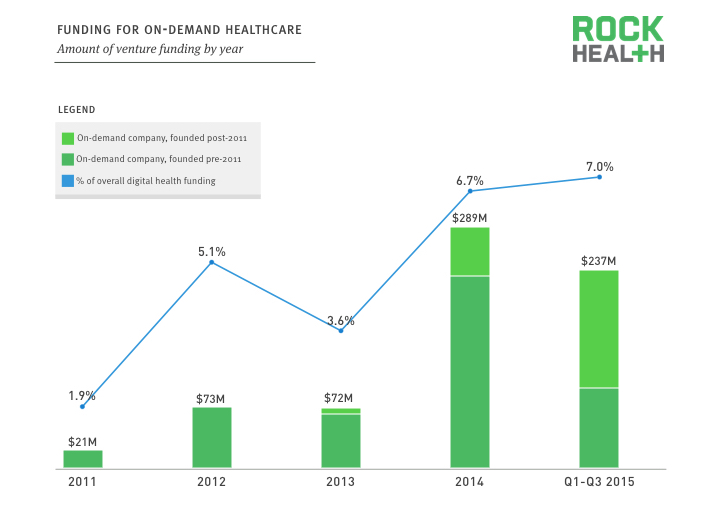Recently, there has been increased pressure for on-demand healthcare. Prospective patients and consumers alike are looking to acquire or purchase healthcare services in the same way that they do other retail goods.
This is especially true for millennials living in big cities around the world. There are numerous companies that aim to deliver on-demand services, such as food, clothing, transportation, and more. These startups have success because they are readily accessible online and through mobile applications, making it easy for consumers to use their services. Popular examples include Amazon, Uber, GrubHub, Postmates, and Instacart.
Healthcare is starting to be pushed towards this business model as well. Innovative companies like Doctor on Demand, Heal, Teladoc, and Zipdrug are bringing healthcare to consumer’s fingertips. While most on-demand healthcare companies provide telemedical services, such as Teladoc, there is a growing number of startups that are focusing on services such as providing medical house calls (Doctor on Demand, Heal), scheduling doctor appointments (ZocDoc), delivering prescription medications (Zipdrug), and patient access and referral management (ReferralMD).
Indeed, there are a vast array of emerging medical companies utilizing the mobile medium that aim to solve different problems within the healthcare industry. Take a look at the graphic below created by Bessemer Venture Partners:

Evidence:
According to a report by Rock Health, funding for on-demand healthcare services has steadily increased, totaling $692M since 2011.
“Funding for on-demand healthcare has been steadily growing, representing over seven percent of total digital health funding, up from less than two percent in 2011. On-demand healthcare companies saw 300 percent year-over-year funding growth in 2014, compared to 114 percent growth during this same period for funding across all of digital health. While telemedicine has historically received much of the funding dollars, house call and medication delivery companies have recently seen an increase…”

Source: Rock Health Funding Database
Here are 5 glaring statistics throughout the healthcare industry that are driving consumerism and the push for on-demand healthcare:
-
“Missed appointments cost providers $150 billion annually.”
-
“Providers have no-show rates between five and 30 percent nationwide.”
-
“Each 60-minute open or no-show slot typically costs physicians $200.”
-
“88 percent of appointments are still made over the phone and patients are waiting up to 76 days from when a referral is issued to the actual appointment for diagnostic procedures.”
-
“77 percent, say the ability to book, change or cancel appointments online is important to them, only 2.4 percent of appointments are self-scheduled.”
(Click Here to See 30 More Healthcare Statistics That Keep Hospital Executives Up At Night)
All of these statistics show just how inefficient and behind the times healthcare really is. Missed appointments, no-shows, and waiting times have led to pressure from both patients and providers to put more control into the consumer’s hands. Therefore, more and more companies, including our own, are automating the entire process and offering patients self-scheduling options and appointment reminders.










